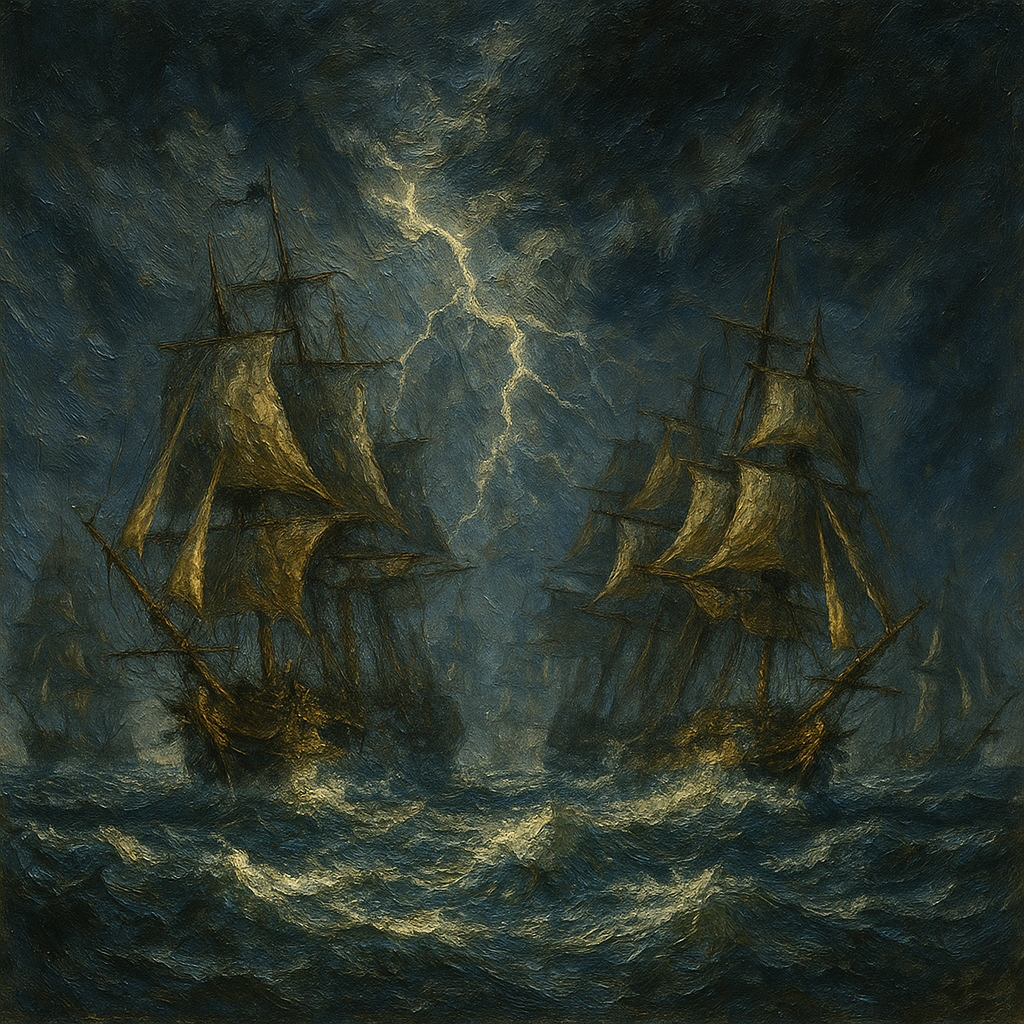Thunder Over the Sails – Meeting the Storm
Thunder Over the Sails – Meeting the Storm
Realizm
Historia i wojna
Lead time
Lead time
⏳ Delivery time
The order processing time depends on: the production technique, the drying time of the paints, the size of the image and any hand-finishing and protection.
🖼️ Art print on canvas
-
High quality canvas printing :
- Canvas - synthetic canvas 260 g
- Natural Canvas - 260 g cotton canvas
- Stretching the canvas onto the frame
- Quality control and packaging
Total completion time:
🎨 Oil Giclée Reproduction (print + hand-finished)
-
Giclée print on canvas:
- Canvas premium - natural cotton canvas 360 g
- Pigment print drying
- Hand finishing: texturing and oil painting
- Paint drying (depending on layer thickness, medium type and format)
- Stretching the canvas onto the frame
- Quality control and packaging
Total completion time: –
🚚 Ready-made paintings – shipped within 24 hours
Our gallery has a special category called "Ready-Made Paintings" - these are works available immediately, already stretched on a frame or in a ready-made frame.
- They are 100% ready for immediate shipment
- Safe packaging in a reinforced cardboard box
Shipping takes place within: from the date of booking the order.
Image format: Reprodukcja Oil Giclée
Need a different size? Contact us.
Couldn't load pickup availability
1. Title
"Thunder Over Sails – Meeting the Storm"
2. Description of the image
"Thunder Over Sails – Meeting the Storm" is a visual culmination of the elements and human courage. Two warships, bathed in a storm, approach each other in a dramatic ballet against a sky slashed by lightning. This isn't a battle – it's a test. A test of the strength of wood, the will of the commander, the structure, and the individual. The painting doesn't depict a clash, but the moment when the storm becomes the main enemy, and the unpredictability of the element prevails over strategy. It's a scene where even silence has a sound – the approaching clap of thunder.
3. Technology
Oil on canvas with heavy, impasto modeling of waves and clouds. Bold brushwork gives the sails and water a dynamic expression, while delicate dry brushing and fine liner accentuate the reflections of light on the masts, gunwale, and seafoam. Every fragment of the painting pulsates with energy—as if the canvas itself were tense from a lightning bolt.
4. Style
Romantic realism with dramatic chiaroscuro, inspired by John Constable's maritime scenes and Turner's mood. A painting style that captures not so much the ships' shapes as their weight—physical and emotional—in the face of the untamed elements.
5. Colors
Deep blues, inky navy blues , and steel grays dominate, illuminated by dramatic flashes of yellow and off-white . The color of lightning marks the center of the painting—everything gravitates toward it, yet simultaneously flees from it. The sea is blue, but it's a blue of tension, not peace.
6. Invoice
Heavy, dynamic, almost sculptural. The waves are thickly applied, layer upon layer, creating not a painterly, but an almost physical presence of the element. The canvas seems to tremble—like the air before a lightning strike. The full power of this scene lies in the texture—unpredictable, quivering, disturbingly real.
7. Inspiration
The film draws on maritime romanticism, from Turner to Théodore Géricault. But also on the aesthetics of contemporary cinema – the drama of "Master and Commander" and the emotional complexity of "Battleship Potemkin." The inspiration comes from nature itself – its unpredictability, its ruthlessness, its beauty and terror at once.
8. Message and multidimensionality of interpretation
This isn't just an image of a storm—it's an image of trial. Is a ship merely a machine, or an extension of a person's courage? Is lightning an end or a warning? Will two individuals meet, or will they drift apart in chaos? The image raises questions about confronting what cannot be controlled—and about what remains of a person when everything else is stripped away.
9. Originality and authenticity
This work isn't about victory or defeat—it's about the moment before them. About tension. About a question that still has no answer. Original in its compositional symmetry and naturalistic chaos. Authentic because no one tells the story of a storm better than a painting that seems to be part of it.
✨ The storm doesn't ask questions. It tests the answers. ✨
Share


